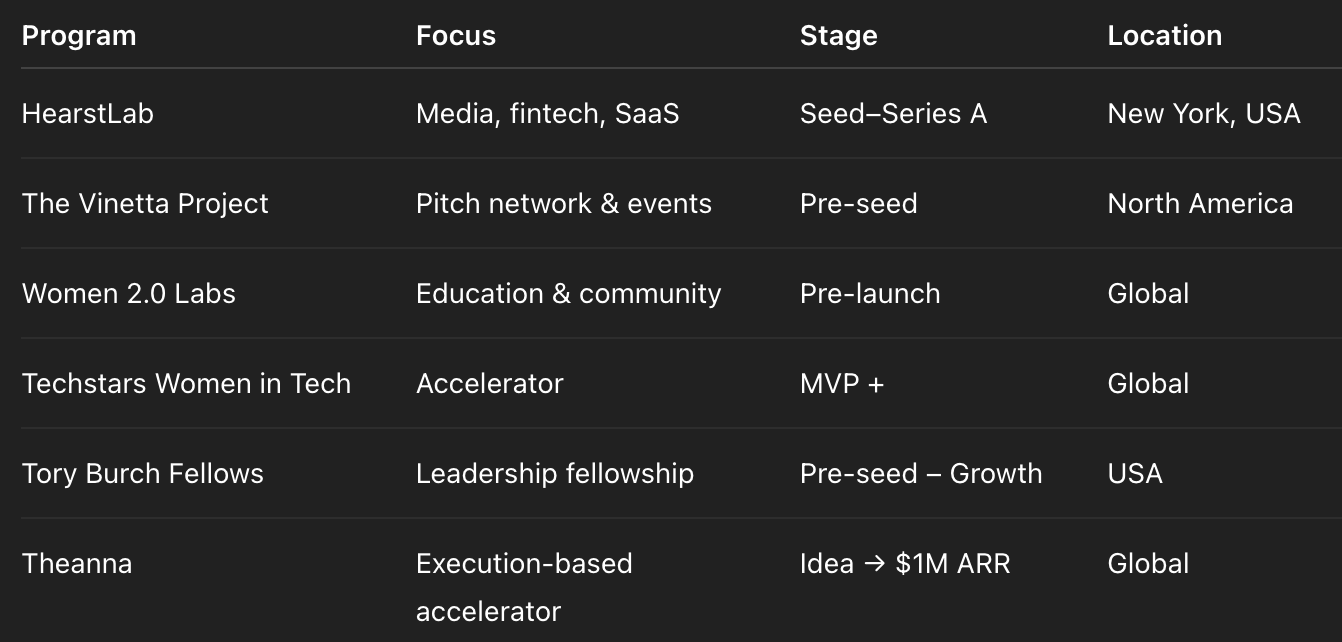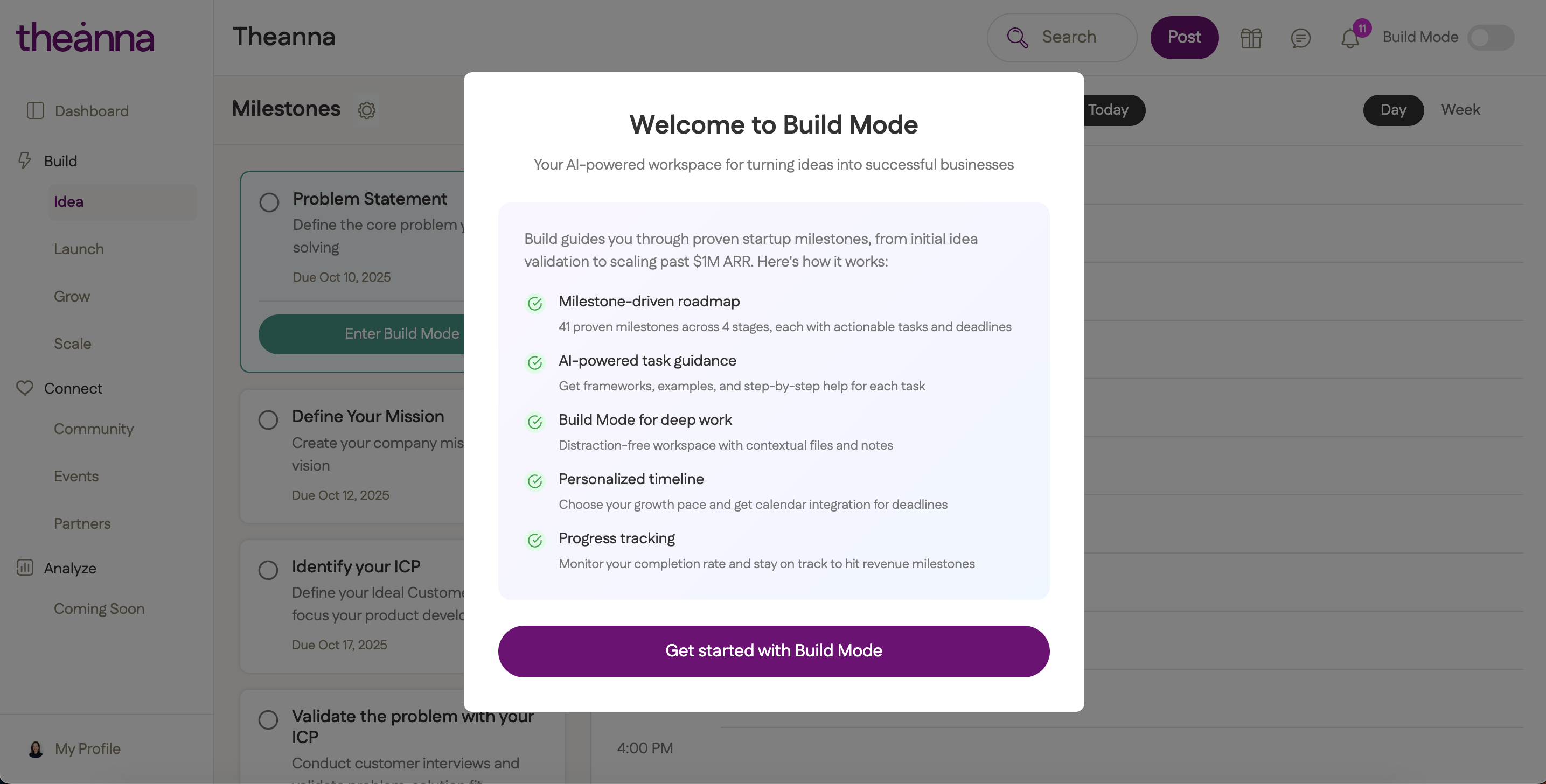Why Most Accelerators Don’t Work for Women — And What’s Replacing Them
Most accelerators were never designed for women. They were designed for 25-year-old technical founders who could move to Silicon Valley, work 90-hour weeks, and pitch for capital without childcare, bias, or burnout.
That model still defines the startup world today. Programs like Y Combinator, Techstars, and 500 Startups helped shape generations of successful companies, but their structures — full-time residencies, rapid investor prep, and short sprints — rarely fit the realities of women founders.
In 2025, women make up 36 percent of founders globally (World Bank, 2025) but represent less than 15 percent of accelerator participants (Global Accelerator Report 2024). The problem isn’t capability — it’s fit.
Women founders are launching more businesses than ever, but traditional accelerators have failed to evolve around how women actually build. That gap is giving rise to a new generation of accelerators — flexible, digital, and execution-first — with Theanna leading the charge.
Accelerators were originally designed to produce venture-backable outcomes. They reward scale, speed, and pitch performance. Those incentives often clash with how many women founders build companies: thoughtfully, customer-first, and often balancing caregiving or other professional commitments.
As a result, many women founders who do enter top programs drop out early or leave without meaningful momentum.
Research from the Harvard Kennedy School shows female founders are routinely asked prevention-focused questions (“How will you avoid losing customers?”) while male founders are asked promotion-focused ones (“How big could this get?”). Those patterns carry into accelerator mentorship and demo-day feedback.
A 2024 survey of founders by TechCrunch found that 60 percent of women founders felt their accelerator experience overemphasized investor relationships and underemphasized execution support.
Studies from BCG show that women-led teams generate 2.5 times higher ROI because they build more collaborative, customer-centric environments.
Women founders are twice as likely to aim for profitability within three years (Hello Alice Report 2025). Their approach favors repeatable revenue before external capital.
Accelerators demanding relocation or full-time residency create immediate exclusion. Many women founders work from smaller ecosystems or balance family schedules that don’t align with residency-based models.
This is not a weakness; it is a different mode of building that prioritizes durability and inclusion. The accelerator model simply hasn’t caught up.
Note: While we refer broadly to accelerators for female founders, many programs below are actually incubators, funds, or fellowships. Each is labeled clearly so founders can choose the right fit for their goals.

Type: Community and Execution-First Accelerator (Hybrid / AI-Driven)
Overview:
Theanna helps women founders go from idea to $1 M ARR with milestone-based frameworks, AI-powered guidance, and a global founder community. Instead of pitching for funding too soon, founders focus on execution, validation, and early revenue.
Pros:
Cons:
Best for:
Women founders with tech ideas who want structure, support, and execution frameworks, especially non-technical founders building their first MVP.
Website: theanna.io
.png)
Type: Venture Fund + Incubator
Overview:
HearstLab is an investment arm of Hearst Corporation supporting early-stage, women-led startups in media, data, and technology. It provides capital, strategic resources, and access to Hearst’s corporate ecosystem.
Pros:
Cons:
Best for:
Women founders with traction (prototype or early revenue) seeking funding, strategic partnerships, and enterprise-level incubation.
Website: hearstlab.com
Type: Fellowship + Grant Program
Overview:
The Tory Burch Foundation supports early-stage women entrepreneurs through a fellowship offering a $5,000 grant, business education, and a national community of peers.
Pros:
Cons:
Best for:
Consumer, retail, or service-based women entrepreneurs who want leadership training and visibility rather than startup tech acceleration.
Website: toryburchfoundation.org/fellows
Type: Virtual Accelerator (Fundraising Preparation)
Overview:
Ready Set Raise helps women and non-binary founders prepare for fundraising through an eight-week virtual accelerator focused on investor readiness and storytelling.
Pros:
Cons:
Best for:
Founders with traction who want to improve their fundraising strategy and investor network.
Website: femalefounders.org
Type: Hybrid Incubator + Investment Readiness Program
Overview:
Hive Founders runs global programs designed for women entrepreneurs — including “Zero to Launch” (idea-stage incubation) and “Investment Readiness” (fundraising acceleration).
Pros:
Cons:
Best for:
Global women founders seeking structured incubation or investor-readiness training and international networking.
Website: hivefounders.net
Type: Accelerator + Community Education Program
Overview:
Women 2.0 Labs provides online programs, events, and its “Accelerator” initiative focused on Black & Latinx women founders in tech. It combines mentorship, education, and community building.
Pros:
Cons:
Best for:
Women of color in tech seeking community, mentorship, and practical training for startup readiness.
Website: women2.com/accelerator
Type: Investor Network + Pitch Program
Overview:
The Vinetta Project connects women entrepreneurs with investors through pitch events, showcases, and mentorship programs. It emphasizes exposure and funding connections.
Pros:
Cons:
Best for:
Established women founders ready to raise capital or expand visibility through investor events.
Website: vinettaproject.com
Theanna represents a new category: a Build Accelerator. It merges the accountability of a cohort with the personalization of AI-driven coaching.

Unlike accelerators that select ten companies for investor return potential, Theanna focuses on hundreds of women founders building durable startups to $1M ARR.
Accelerator success is often judged by confidence, charisma, and pitch performance — not execution. Research from the Kauffman Foundation shows that women tend to be under-scored in pitch competitions even when their business metrics are stronger.
Residency requirements and intense timelines are exclusionary. A Harvard Business Review study 2023 found that more than 40 percent of women founders declined accelerator offers due to time and location constraints.
Many accelerators rely on alumni investment cycles or LP pressure to produce “fundable” outcomes. This perpetuates a model where funding is success, not founding.
Theanna flips this dynamic: funding becomes optional — building becomes inevitable.
The acceleration model is changing from exclusive to distributed.
The builders of the next decade will not wait for acceptance letters. They will plug into digital ecosystems like Theanna, use no-code tools, validate with real customers, and reach $1 M ARR before they ever speak to a VC.
Accelerators helped define the startup era, but their design language is outdated. The next generation of programs will succeed not by selecting the right founders but by supporting them differently.
Women build startups that last longer, grow more sustainably, and deliver stronger returns when given frameworks built for how they actually operate.
Theanna’s model proves what happens when acceleration meets accessibility: women founders move faster, make smarter decisions, and build companies designed for longevity — not just valuation.
The future of acceleration is inclusive, data-driven, and built on execution. The future, in other words, looks a lot like Theanna.